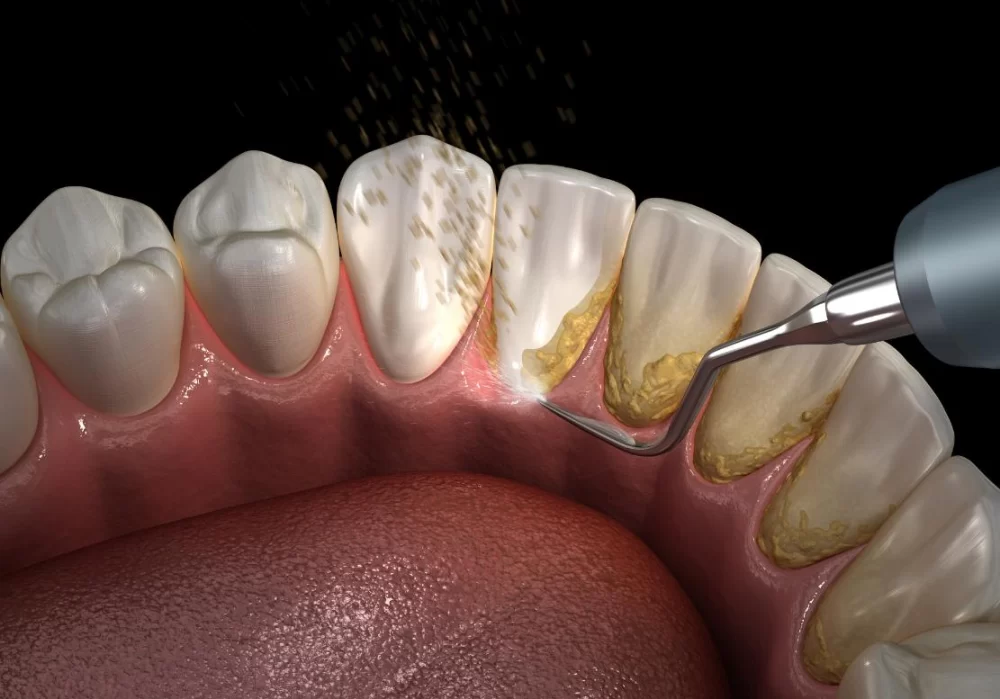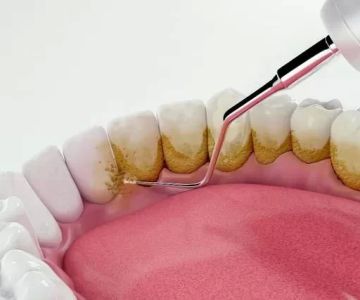
- 1. What Is Plaque and How Does It Form?
- 2. What Is Tartar and Why Is It Harmful?
- 3. Key Differences Between Plaque and Tartar
- 4. How to Prevent Plaque and Tartar Build-Up
- 5. Real-Life Experiences with Plaque and Tartar
1. What Is Plaque and How Does It Form?
Plaque is a sticky, colorless film of bacteria that continuously forms on your teeth. It develops when food particles, particularly sugars and starches, combine with the bacteria naturally present in your mouth. If not removed by regular brushing and flossing, plaque can accumulate on your teeth, leading to potential dental issues such as cavities, gum disease, and bad breath. Plaque starts to build up immediately after eating, and its formation is a natural part of the mouth's bacterial process. However, consistent oral hygiene can prevent plaque from developing into a bigger issue.
2. What Is Tartar and Why Is It Harmful?
Tartar, also known as dental calculus, is the hardened version of plaque. When plaque is not removed through brushing, it hardens over time due to the minerals in your saliva. Tartar forms above and below the gum line and can only be removed through professional dental cleaning. Once tartar is formed, it provides a rough surface for more plaque to adhere to, creating a vicious cycle that leads to more buildup and potential dental problems. Tartar is harmful because it can cause gum inflammation, increase the risk of cavities, and contribute to gum disease.
3. Key Differences Between Plaque and Tartar
Understanding the difference between plaque and tartar is crucial for effective oral care:
- Composition: Plaque is a soft, sticky film of bacteria, while tartar is hardened plaque that has been mineralized.
- Removal: Plaque can be easily removed with regular brushing and flossing, while tartar requires professional dental cleaning.
- Time to Form: Plaque begins forming soon after eating, while tartar forms only after plaque has been left untreated for days or weeks.
- Effects: Plaque can cause cavities and gum disease if not removed, while tartar can lead to more serious issues such as advanced gum disease and tooth loss.
4. How to Prevent Plaque and Tartar Build-Up
To prevent plaque and tartar from forming, it is important to maintain a strong oral hygiene routine. Here are a few key habits to keep your teeth clean and healthy:
- Brush twice a day: Brush your teeth with fluoride toothpaste for at least two minutes, paying attention to all surfaces of your teeth, including the gumline.
- Floss daily: Flossing removes plaque and food particles from between your teeth that your toothbrush might miss.
- Use mouthwash: An antimicrobial mouthwash can help reduce bacteria in your mouth and prevent plaque buildup.
- Visit your dentist regularly: Regular dental check-ups and cleanings are crucial for removing tartar and ensuring that your teeth stay healthy.
- Limit sugary foods: Reducing your intake of sugary foods can help prevent plaque from forming, as bacteria feed on sugar to produce acids that attack your teeth.
5. Real-Life Experiences with Plaque and Tartar
Real-life stories can help highlight the importance of understanding plaque and tartar. For instance, John had been experiencing swollen gums and bleeding while brushing. He attributed it to stress, but after visiting his dentist, he learned that the cause was plaque buildup that had turned into tartar. His dentist explained how tartar had led to gum disease, and John was advised to get a deep cleaning. Another example is Anna, who had never had her teeth professionally cleaned. After noticing yellow discoloration on her teeth, she decided to get a cleaning and was surprised to learn how much tartar had accumulated, making her realize the importance of regular dental visits.







 Westgate Dental Arts
Westgate Dental Arts Coventry Family Dental
Coventry Family Dental Familia Dental
Familia Dental Dr. Daniel S. Fife, DDS
Dr. Daniel S. Fife, DDS Dentistry At Suburban Square: Michael I. Wollock, DMD
Dentistry At Suburban Square: Michael I. Wollock, DMD Comfort Care Dental
Comfort Care Dental The Importance of Oral Health Education During Pregnancy for a Healthy Pregnancy
The Importance of Oral Health Education During Pregnancy for a Healthy Pregnancy Why Skipping Dental Checkups Can Lead to Bigger Oral Health Problems
Why Skipping Dental Checkups Can Lead to Bigger Oral Health Problems Advantages of Porcelain Dental Restorations
Advantages of Porcelain Dental Restorations Best Tips for Brushing Your Teeth Properly for Healthy Gums: Essential Techniques for Oral Health
Best Tips for Brushing Your Teeth Properly for Healthy Gums: Essential Techniques for Oral Health How Can Diabetes Cause Tooth and Gum Problems? Preventing and Managing Oral Health Issues
How Can Diabetes Cause Tooth and Gum Problems? Preventing and Managing Oral Health Issues Healthy Habits for Promoting Good Oral Health and Hygiene: Tips for a Healthy Smile
Healthy Habits for Promoting Good Oral Health and Hygiene: Tips for a Healthy Smile